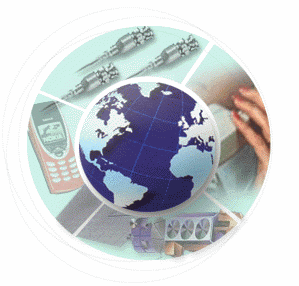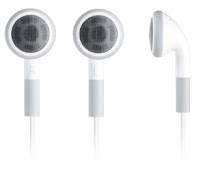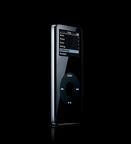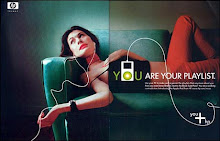
Wednesday, May 14, 2008
The YOUTH and HIP-HOP

THE INTERNET AND MUSIC

I-tunes and podcasting!


Users can choose to update podcasts weekly, daily, hourly, or manually. Podcasting's initial appeal was to allow individuals to distribute their own radio-like shows, but the system quickly became used in a wide variety of other ways, including distribution of school lessons, official and unofficial audio tours of museums, conference meeting alerts and updates, and by police departments to distribute public safety messages ect. Podcasting is becoming increasingly popular in education. Podcasts enable students and teachers to share information with anyone at any time. An absent student can download the podcast of the recorded lesson. It can be a tool for teachers or administrators to communicate curriculum, assignments and other information with parents and the community.

Podcasting could rage across iPod communities and change the way that people view media the same way that blogs have raged across the internet and changed the way that media is received and perceived.

CELEBRITIES AND THEIR CELLIES

Its innovative design and full keyboard boosted the Sidekick into celebrity-favorite territory years ago. Nick Cannon, Ashton Kutcher, Rachel Bilson and Jennifer Hudson also use the LX, a model that boasts a high-definition screen and mood lights that change color to indicate incoming calls or messages.

Ryan Cabrera
Phone: Sony Ericsson W580i Walkman Phone
This music phone from Sony Ericsson is popular with musicians, including Jon Bon Jovi and teen pop duo Aly and AJ.

Phone: Jawbone Headset
Traditional cellphones aren't the only draw at celebrity gifting suites. Cellphone accessories, such as these Bluetooth Jawbone headsets are popular giveaways as well, says Shruti Dhalwala of gifting company Backstage Creations. At the Teen Choice Awards, Snoop Dogg scooped up a headset, as did Ludacris, Vanessa Hudgens, and Sophia Bush.
Phone: Apple iPhone
The iPhone has plenty of fans in the corporate and tech worlds, but Hollywood celebrities are a little cool these day toward the trendy device. Celebs like Lindsay Lohan and Paris Hilton tried out the phone earlier in the year, but seem to have put it aside. Miley Cyrus appears to be a new fan. On a recent Oprah episode, she could be seen clutching the sleek phone.
"Multi-talents" of the mobile phone
 The innovation and growth on the mobile phones front is astonishing. The top-end phones available now have the processing power and storage available in desktop computers just 4-5 years ago. The mobile phone is rapidly becoming the uber device -- the one device that seems to have it all and becomes even more indispensable than it is now. Mobile phones have already started functioning as more than just communications devices. Mobiles serve as watches and alarm clocks. Even with the limited free games that come with basic phones, they are already good for "time-pass". They can also function as calculators.
The innovation and growth on the mobile phones front is astonishing. The top-end phones available now have the processing power and storage available in desktop computers just 4-5 years ago. The mobile phone is rapidly becoming the uber device -- the one device that seems to have it all and becomes even more indispensable than it is now. Mobile phones have already started functioning as more than just communications devices. Mobiles serve as watches and alarm clocks. Even with the limited free games that come with basic phones, they are already good for "time-pass". They can also function as calculators.In unfamiliar neighbourhoods, they tell us where we are. The address book and contacts list on phones is our social interface. Without the phone, many of us would be quite lost in connecting with other people. The calendar function on the mobile phones can help us track our lives. Phones can also function as radios. For some, the mobile phone also becomes a notepad -- send an SMS to oneself and make it a reminder service. Owners also have tended to customise phones, with their own ringtones, themes and wallpapers.
This is just for starters. Consider what some of the more advanced mobile phones are also doing:
Digital camera: Point-and-click! Phones capture pictures and let us save them for posterity or transfer them to others and to computers.
Audio recorder: Mobile phones can be used to record conversations or even brief notes to oneself.
Video recorder: Phones are becoming video cameras also -- some of the newest cellphones can record an hour or more of video.
Multimedia messaging: Everything recorded can be shared with others by using MMS.
Email client:. While most phones may not have the ease of use that a Blackberry has with email, contacts and calendar, the fact that it is on the phone itself and that there is no need for a separate device can be a big help (along with the lower total cost of ownership).
Web client: Phones can also browse websites, via a WAP and/or HTML browser. Most web sites may not look great on the small screen, but it is still possible to connect to any web site.
Gaming platform: Mobile games have become big business in the past couple years as people seek entertainment in the free time that they have on the device that they always carry with them.
Documents viewer: It is increasingly possible to view documents on the cellphone, in the popular MS-Office file formats.
Computer adjunct: For many, the cellphone has replaced the PDA as the complement to the computer. With a remote desktop application, it also becomes possible to make the mobile phone a window to one's computer.
Music player: The next big thing to be reckoned with is the combining of music capabilities on the mobile phone. While phones can play MP3s, it will soon also be possible to have music streamed from the Internet. Motorola is expected to introduce a phone this year that marries the mobile with Apple's iPod.
TV: In many countries, some operators have been promoting many TV channels on the cellphone over next-generation networks like EDGE.
Wallet: The phone can also be used to pay for purchases like a credit or debit card. There is already a billing relationship that exists between the subscriber and the operator, and that can be used to make payments to merchants.
Bar-code readers: Phones will also be able to read bar codes and that can have very interesting applications in commerce.
So the phones of tomorrow will be the remote controls of our life. They will come with bigger, better keyboards and displays -- even though there are practical limitations on how big a device we will carry. .Mobile phones are morphing -- to the point where voice is just incidental. They are becoming, what has been called, teleputers.
Tuesday, May 13, 2008
THE UNIVERSAL LANGUAGE OF MUSIC

Can your cellphone reveal anything about you?
 Many people say “yes”. Ever wondered why people own the phones that they do? For instance why do so many young women love slim or small cellphones whereas the opposite sex prefers chunkier devices with larger external Bluetooth handsets? This is because our very own technology pieces influence our identity and vice versa. Think about it, amongst the hundreds (if not thousands) of cellphones currently available on the market, why do you own the one that you have now? Is it because it appeals to you visually or because it has impressive features? It wouldn’t make much sense if a sixty year old pensioner who has no need for a cellphone whatsoever other than making and receiving calls to own a cellphone with a GPS navigation system or with an I-pod music player. Using this scenario, one may assume that the
Many people say “yes”. Ever wondered why people own the phones that they do? For instance why do so many young women love slim or small cellphones whereas the opposite sex prefers chunkier devices with larger external Bluetooth handsets? This is because our very own technology pieces influence our identity and vice versa. Think about it, amongst the hundreds (if not thousands) of cellphones currently available on the market, why do you own the one that you have now? Is it because it appeals to you visually or because it has impressive features? It wouldn’t make much sense if a sixty year old pensioner who has no need for a cellphone whatsoever other than making and receiving calls to own a cellphone with a GPS navigation system or with an I-pod music player. Using this scenario, one may assume that the  man is not a fan of keeping up with cellphone technology. On the other hand, imagine a girl who is a “teeny-bopper” probably aged sixteen or so. We don’t know her from bar of soap but she pulls out her cell phone in the paying queue at McDonalds and bingo, we learn something about her without even speaking to her. She owns a gold limited edition Dolce and Gabbana Motorola V3 Razr, a sleek flip phone with a catchy pop music ringtone. Immediately we may assume that she is very fashion conscious, aware of style trends and selective about her choice in cellphone models. A person’s mobile can reveal a lot about them. Personalization of cellphones is also a method of reflecting a persons identity for example many purchase minor commodities to make their cellphones “their own” such as personalized alphabetic cellphone charms, phone covers, pouches, cellphone “socks” and the like. The cellphone itself gives you the option of configuring the options to suit your tastes and preferences such as your choice of wallpapers, ringtones and screen savers.
man is not a fan of keeping up with cellphone technology. On the other hand, imagine a girl who is a “teeny-bopper” probably aged sixteen or so. We don’t know her from bar of soap but she pulls out her cell phone in the paying queue at McDonalds and bingo, we learn something about her without even speaking to her. She owns a gold limited edition Dolce and Gabbana Motorola V3 Razr, a sleek flip phone with a catchy pop music ringtone. Immediately we may assume that she is very fashion conscious, aware of style trends and selective about her choice in cellphone models. A person’s mobile can reveal a lot about them. Personalization of cellphones is also a method of reflecting a persons identity for example many purchase minor commodities to make their cellphones “their own” such as personalized alphabetic cellphone charms, phone covers, pouches, cellphone “socks” and the like. The cellphone itself gives you the option of configuring the options to suit your tastes and preferences such as your choice of wallpapers, ringtones and screen savers.
THE MUSIC SIDE OF LIFE

music and the construction of identity

Music has a large influence on identity. The music that many people listen to says a lot about them for example people who listen to religious music on a continuous basis have an established identity that they are religious. Katherine Hamley says in her article that popular music is always listened to within specific social settings and locations, and used as a background to any number of activities from courting and sexual encounters, dancing in clubs, to surviving in work, or to defeat boredom in the home (aber, no date, paragraph 19). The new media constantly portrays musicians such as 50 cent, Eminem, Snoop Dogg (famous rap artists) etc, as icons and many of the teenagers aspire to be like them and see these icons as role models. This influences the teen’s identity in that they behave the way that these icons do, they copy their style of dress, speech etc. Many of these rap artists such as
P. Diddy and Jay Z among many have established their own line of clothing therefore influencing their fans to dress like them. Music also has a negative effect on peoles identity. Artists such as Snoop Dogg, 2 pac, etc promote negative behaviours, such as taking drugs, gang violence, etc in many of their songs. This may also influence people’s behaviours in a negative way.
There are many technological apparatuses that provide people with new ways to enjoy music now days. iPods and cell phones are technologies that play music and therefore teenagers have to have them to keep up to date. Mtv is a TV channel available on satellite TV that provides the public with music videos and also the latest releases. This is likely to be watched by teenagers as they are exposed to the new trends and styles of their icons. These images have the power to influence ones identity in the way that they behave, dress, speak, and act in society.
Music also has cultural backgrounds. For example you may find that certain cultures or ethnic groups listen to very distinct types of music.
With the Hindus, for example, music plays a big part in their cultural beliefs. This helps to give one their identity in terms of culture.
Reference: Aber (no date) media [online] available at: http://www.aber.ac.uk/media/Students/klh9802.html
World of our own!
A very wise Canadian writer by the named of Marshall McLuhan was responsible for coining the phrase known as “the global village" to describe the world we live in which is fast becoming more connected in more revolutionary ways thanks to the new media and its technological advancements. What is a village? "A small community where everyone knows each other" springs to mind. Perhaps the thought that each person in the community helps the village to survive and so everyone is dependent on each other applies. These are good descriptions of a village but could we say this about our world? Physically our world is enormous. How can we all be connected to each other? One possible answer to this question lies within the realm of cell phone technology… since the last century; cell phone communication has drastically permitted people to be in contact with other parts of the world more quickly and more easily than ever before. The global village, as McLuhan meant it, is an image that shows us to be connected to, and dependent on, other parts of the world. Cell phone technology is a technological advance that is impacting people all over the world and bringing them closer together. Cell phones enable people to be anywhere in the country and speak to friends and family while carrying their personal phone along with them. A person can be accessed whether at home or on the other side of the continent. The caller need not even be aware of the receiver's location. Cellphone technology is making the world’s boundaries limitless!
Monday, May 12, 2008
Global village and communications

The global village has come to represent and perhaps link technological progress with better global human relations that in turn has unearthed and defined a specific youth culture. In essence, the changing global media landscape the arrival of a powerful global media-driven culture is shaping the socialization processes, values, and beliefs of younger and older people thus influencing people’s decisions.
New technologies offer a culture of information, pleasure and relative autonomy, all of which are of particular appeal to society's youth. This has implications not only for young people themselves but also for their relationships within the family and between generations. The advent of globalization has meant, for many people, the sphere of experience has become global and local at once. People are often among the first to take advantage of the introduction of new technologies.
People using i-pods can communicate through i-tunes were they can listen to other peoples tunes that they have on their i-pods, this means that they are in close proximity in meeting each other. There are also i-pod communities were i-pod owners can chat and discuss things concerning I-pods and other things in general, people also interact through i-pod web rings, forums ect. Apple has also created an education website to teach or educate their customers how to use and make use of the different functions of their I-pods this is called I-life. The Apple Digital Campus Exchange, Apple Education Online Communities which is an, online collaborative environment that provides valuable information and resources and connects members beyond their normal circles and I-village which is a virtual learning community.
I-Pod - Issues of identity?

Firstly we need to know what identity is about. There are different kinds of identity: national identity, social identity, class identity, gender identity, sexual identity, etc. All of these identities are formed beyond our control. Out of all these identities we form our personal identity. Your identity consists roughly of the properties that make you unique as an individual and different from others. Identity is also objectively defined as location in a certain world and can be subjectively appropriated only along with that world, coherent identity incorporates within itself all the various internalized roles and attitudes. Individuals using new media are increasingly mediated by the information and communication capabilities that the new media offer. One of these new media technologies is the I-pod. Individual’s identities are being impacted by the new media in many ways. These new media technologies have made individuals isolate and separate themselves from the real world, the iPod allows for people to adopt new identities, were they isolate themselves and communicate through other means. This allows people to consume in their private spaces.
As mentioned in the post “I-phenomenon that influences your everyday life!!!” IPods make it easy for people to bring their personal spheres into a public space which preoccupies an individual so that they are no longer obligated to uncontrollable factors of everyday life, people who have these white wires coming out of their ears are already perceived that what they have is an I-pod and that they are listening to music, so do not disturb them because they are consumed in their own space and world. From both the inner and outer identity technologies such as: I-pod is used increasingly to project a desirable image to others, to express social status and to make visible personal characteristics and to create an identity.
I-phenomenon that influences your everyday life!!!

They’re everywhere, on campuses, schools, malls, street corners, at parties… You just cannot avoid them… It’s an iPod! The glowing white wires coming out of their ears signifies that they have an IPod and listening to music. It seems as if everyone has one, this could be because having your own personal selection of music by your side 24/7 is far too attractive to resist. So how does it impact on our everyday life? It allows listeners to listen to their favourite music on the go, wherever they are and the power to control how they feel and act towards themselves and others. There are negative concerns in terms of using an iPod and the positives were it can just be taken as a portable mp3 player that allows you to listen to music on the go.
So what are the negative effects of having an IPod? IPods can be a major deterrent in to having a conversation, some people even have a conversation while listening to their IPod, which is not a positive phenomenon for society. IPods make it easy for people to bring their personal spheres into a public space which preoccupies an individual so that they are no longer obligated to uncontrollable factors of everyday life, interactions between individuals are slowly diminishing because people are turning towards their technological devices such as an iPod.
So it brings me to what the positives are? IPod allows people to listen to another person’s music collection through iTunes, which provides a person with the insight of another user’s personality. Since iTunes sharing is between people on the same server it often means they are in close proximity with the potential of meeting. IPod can create tighter bonds between people in person and virtually. People are able to participate within the iPod community giving them a sense of belonging such as interactions between people in web rings, forums, the iTunes music store and other general websites discussing the iPod, and everything involved with it and lastly an iPod fills peoples ears everyday with music that makes them happy, it maintains a persons personal space and encourage self-expression.
What is an I-pod?

I-pod is a portable device for storing and playing audio files encoded by mp3 and it also stores videos and pictures.I-pod is designed by Apple computer and was released in 2001. All I-Pods (except for the shuffle and touch) have five buttons and the later generations have the buttons integrated into the click wheel an innovation which gives an uncluttered, minimalist interface. The buttons perform basic functions such as play, next track, etc.

Apple has continued over the years to innovate the I-pod to make it a slimmer, sleeker exterior image, while expanding its capacity to store songs, videos and pictures and its capabilities. I-pods are user friendly and have a user friendly design so that even the most technology challenged people can use it with ease. I-pods is not just a device that plays music or videos ect, it is also used as a teaching tool that is being used in many different ways to speak to today’s students in a language they can understand. When connected to a personal computer (PC), Windows or Macintosh, the I-Pod communicates with a piece of Apple software called i-Tunes. I-Pod and i-Tunes work together to synchronize the songs available on i-Pod to those available on the PC. This happens automatically, without any intervention being required from the user.
Thursday, April 10, 2008
Cellphones in the everyday life

The utlization of cellphone technology has become an intrinsic part of practically everbody's lifestyles on a daily basis. In the last ten years, man's usage and dependency on this device has increased dramatically. A cellphone was once one of the most sought after commodities but now it's no surprise to see a six year old kid busy with their new "toy". What was considered to be an exclusive communication tool only used by those who are considered prominent, business class or financially able, a cellphone now is like a basic necessity and if you don't have one(you have got to be kidding) then you must have a really valid reason why you don't or else something is seriously wrong with you. Given the high levels of societal cellphone service penetration, it is a key means for people to communicate with each other.Every second billions of SMS'es are sent or received globally, making the communication and information exchange process reach revolutionary heights.



















